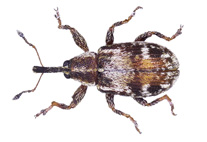Abstract
The family Tripedaliidae was re-defined and expanded based on a molecular phylogenetic hypothesis by Bentlage et al. (2010, Proceedings of the Royal Society Biological Science, 277: 497). Additionally, Bentlage et al. (2010) proposed that all members of the family Tripedaliidae present dimorphism in gonads and have structures that function as seminal vesicles (at least in males). Until now, no information on Tripedalia binata concerning gonad morphology, sexual dimorphism, spermatophore formation or structures that serve as seminal vesicles or spermathecae were published. We studied mature medusae of both sexes of Tripedalia cystophora, Tripedalia binata and Copula sivickisi in order to compare these structures in their stomach regions. We found sexual dimorphism and spermatophore formation in seminal vesicle-like structures in all three species. In particular, we show that along with the females of Copula sivickisi, the females of Tripedalia cystophora and Tripedalia binata also possess structures that store spermatophores and serve as spermathecae.
The results are in agreement with the morphological synapomorphies for Tripedaliidae outlined in Bentlage et al. (2010), but suggest an adjustment of the diagnosis of Tripedaliidae (underlined): All carybdeids that display sexual dimorphism of the gonads, produce spermatophores and in which males and females possess subgastral sacs, pockets or purses which function as seminal vesicles or spermathecae.

